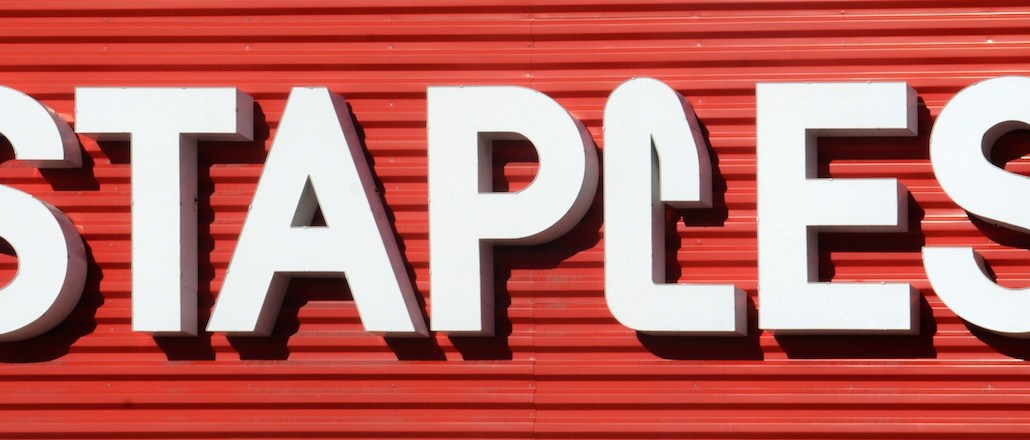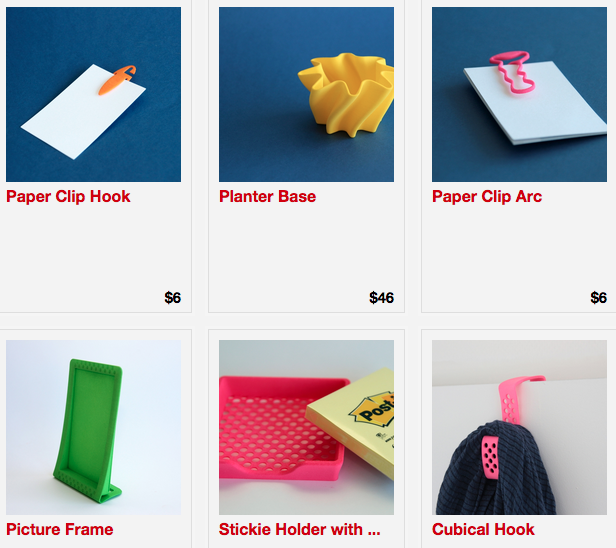
Staples is working to apply its signature “That was easy” motto to a new sector: 3D printing.
Last week, the office supplies chain rolled out a new online platform where users can upload customized designs to be transformed into 3D models. Powered by online 3D printing company Sculpteo, the service also helps novices learn how to use the technology, fixes any errors and provides access to tools that would otherwise cost tens of thousands of dollars. A store consisting of products of 3D printers accompanies the platform, selling things geometric paperweights and picture frames.
“We recognized early that 3D printing is going to revolutionize product design,” said Behzad Soltani, vp of e-commerce services for Staples, Inc. (The company was the first major retailer to sell Makerbot’s at-home printers in 2013). “So, we want to bring those tools forward to show people how they can actually use them.”
According to Soltani, the Staples’ online 3D printing platform is meant to get people to better understand and take advantage of the technology without investing in their own at-home 3D printers. This is an online expansion of the company’s current in-house 3D printing services, which are currently available in 53 Staples locations, within the Copy & Print centers.
By making it accessible to anyone — even those who just want to play around with the customizable products — Soltani thinks 3D printing will become “less intimidating to those without a CAD degree.”
A recent study by market research company IDTechEx projected that the 3D printing industry would grow to $20 billion in the next 10 years. Research lead Rachel Gordon said a majority of the industry is concentrated on the industrial level, like in the medical and engineering fields.
“Such a big name like Staples getting into the technology alerts more of the public that they can get this done. It’s quite promising and a good direction for 3D printing,” Gordon said.
Soltani said that the service isn’t meant for companies like GE, which have been using this technology for years. He explained the example of a bakery that used Staples’ platform to print custom wedding cake toppers and other decorative molds.
“With a bakery and 3D printing, you don’t think of the two going together, and now, it’s a completely new channel or revenue stream for them. That’s what we’re trying to do — help people see the value in this,” said Soltani.

A week after launch, Soltani reported positive results from the platform. Without disclosing specifics, a Staples representative said that orders have been placed every day since launch.
Micah Acinapura, principal software engineer at Huge (which didn’t work with Staples on the platform), said that 3D printing is heading in the direction of becoming the future of buying and creating products, “but it’s not there yet.”
“Staples is helping to move the industry in the right direction by increasing awareness to less tech-savvy Americans that 3D printing is now within their reach,” he said.
Lowe’s Home Improvement has also been introducing shoppers to the abilities of 3D printing. This spring, the retailer began offering in-store 3D printing to some customers as a way to replace missing or broken parts or create décor items in the exact shade or shape they need. Lowe’s announced a similar overall goal of making 3D printing more accessible to the masses, but it’s rolling out slowly: The service is, for now, only available at one California location.
Acinapura thinks that this form — design and ideas happening on the consumer side, and businesses performing the execution — will be the future of the 3D printing industry.
“Even as 3D printers become more affordable and easier to use, the consumer will still look to stores like Staples to complete the printing for them,” he said. “Digital photography is a great example of this — even though home printers are affordable, most people still visit stores to have their photos printed because it’s easier than having to [do it themselves].”
More in Marketing

The Disney-OpenAI deal and generative AI copyright concerns
This week’s Digiday Podcast delves into the copyright concerns and potential trademark issues surrounding brands’ use of generative AI tools, with Davis Wright Tremaine partner Rob Driscoll.

‘There’s tremendous opportunity’: NBA sponsorships lead on European expansion
David Brody, vp, global partner management group lead at the NBA, explains its pitch to sponsor brands and how expansion isn’t far off.

New partnerships, marketing fuel BNPL’s holiday surge
This holiday season, more brands deployed BNPL services with different payment options beyond the more familiar “pay-in-four” structure.





